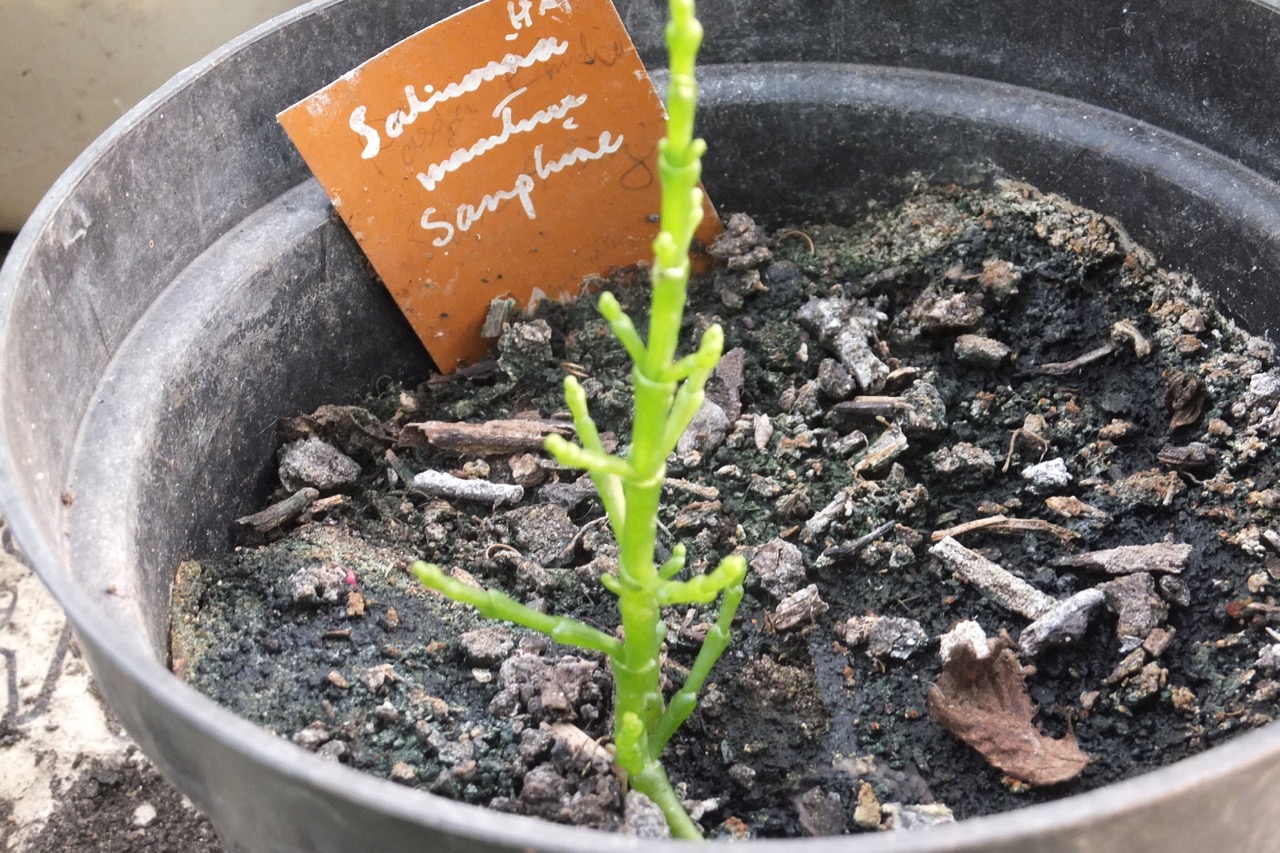
For the edible greenhouse collection this little known maritime esculent is Marsh Samphire, Glasswort, Salicornia europaea. Long collected from shallow salt marshes and sand dunes of East Anglia this is NOT the Samphire, Crithmum maritimum, of Shakespeare, which lives on the wind, blasted rocky outcrops of western coasts. Both living in saline conditions are rich in salts of the many Elements so tasty and nutritiously valuable for us, however this, Marsh Samphire / Glasswort, is by far the easier to cultivate.
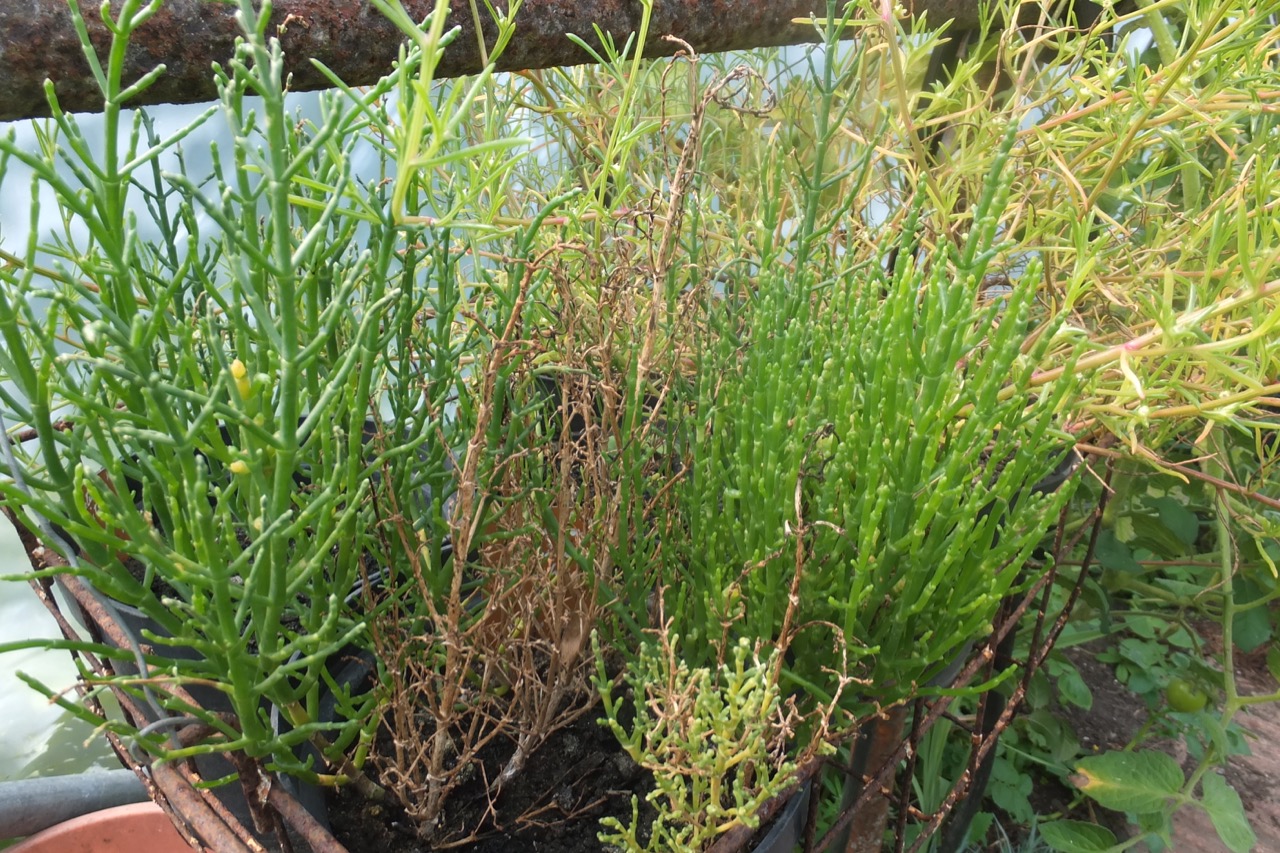
It’s called Glasswort as this is one of the Soda plants, their ash is very rich in this which was necessary to make sand fuse and melt into glass. (Apparently the smell of smouldering dried out Saltwort bonfires was really not at all pleasing so better not try that at home.)
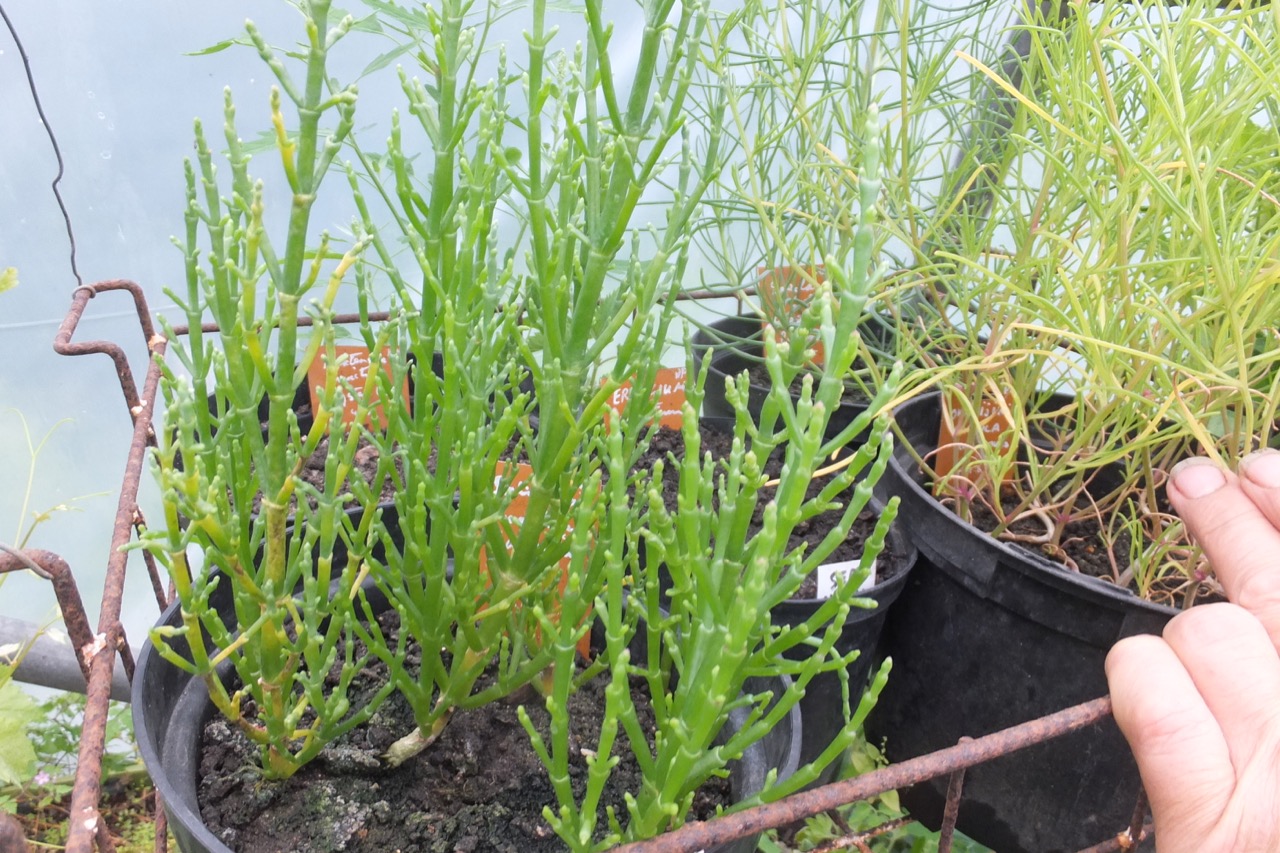
It’s Samphire locally and is eaten much the same as the other, either steamed or pickled, and small tips can be added to salads. These tips are the best eating, the older and plumper these succulent stem-sections are the more fibrous the central core becomes so you then need to pull off the flesh –much after the manner of asparagus but on a smaller scale.
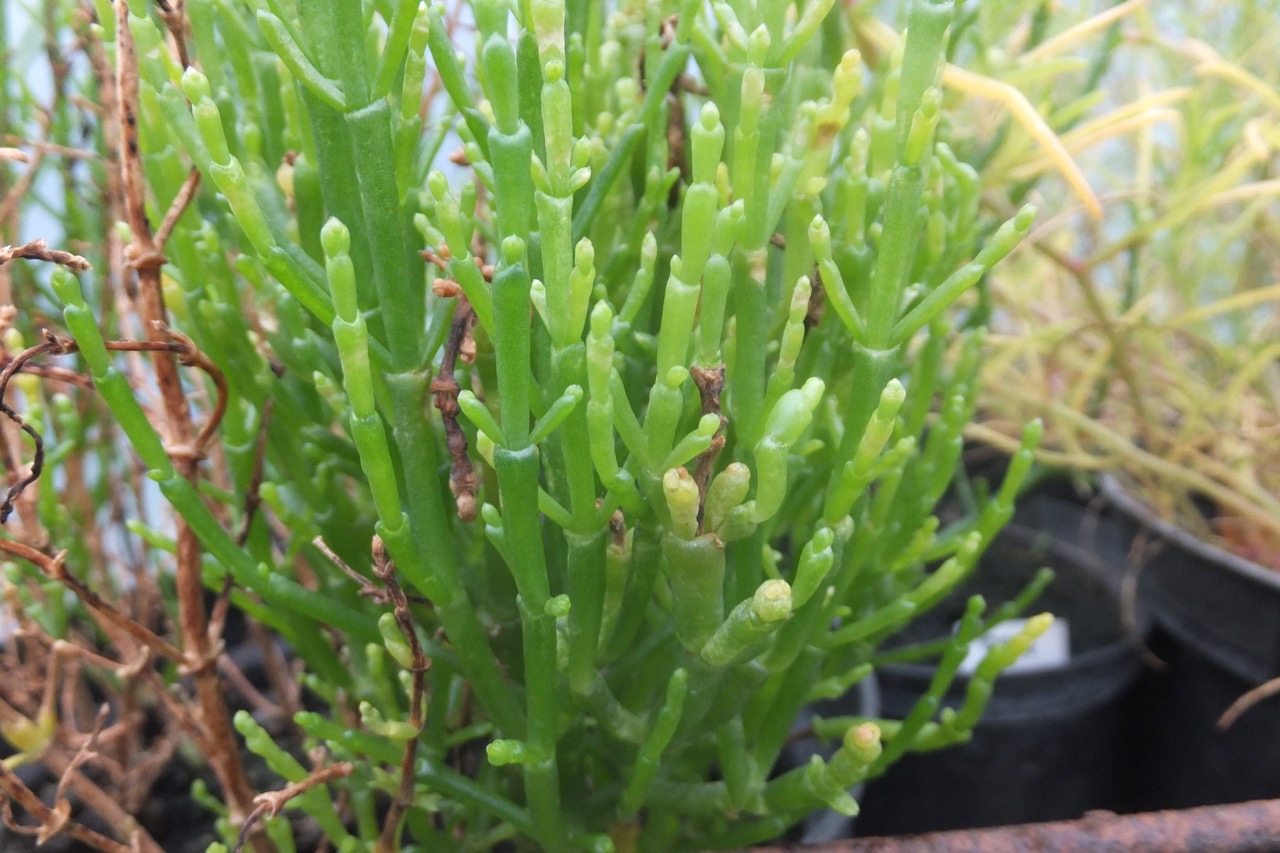
Samphire grows a foot or so in good conditions though this just means sunny, warm and wet. As a salt-marsh plant this is adapted to being kept moister than most greenhouse plants so pots can conveniently be stood in shallow saucers or trays of water. At the same time once established it can withstand the odd drying out.
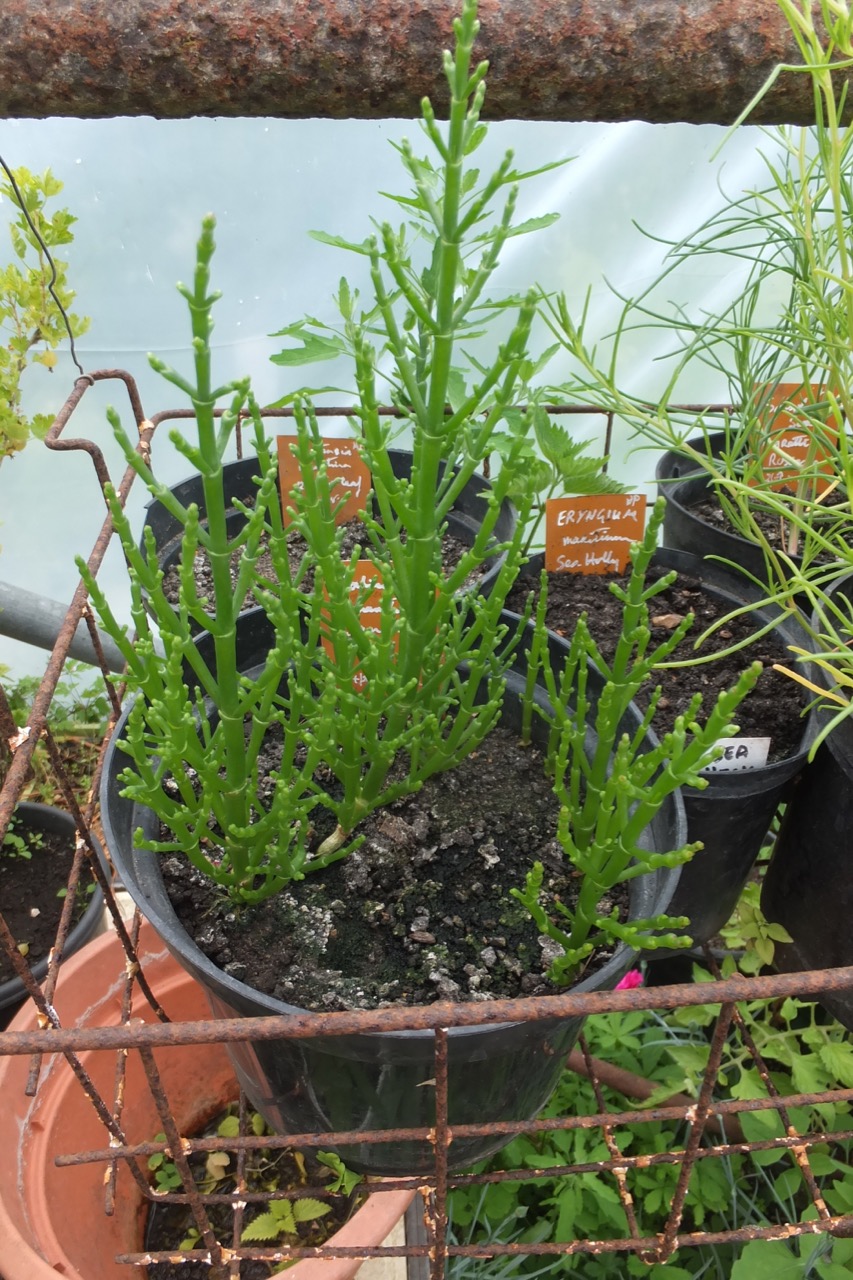
Salicornia will tolerate indeed likes some salt in its water though not strictly needing any nor added fertiliser. So although the plants are not much bothered by slugs anyway those’ll certainly be kept off if you put salt water in their saucers. And Saltwort seldom suffers other pests or diseases, any slight yellowing or reddening are quite normal. Indeed it may be possible to select for coloured forms, the architectural shape makes this plant interesting enough which is fortunate as the tiny yellow flowers are insignificant.
Sow seed in spring in sandy moist compost, once growing plants can be divided and rooted to give more though seedling plants are better and more vigorous.










